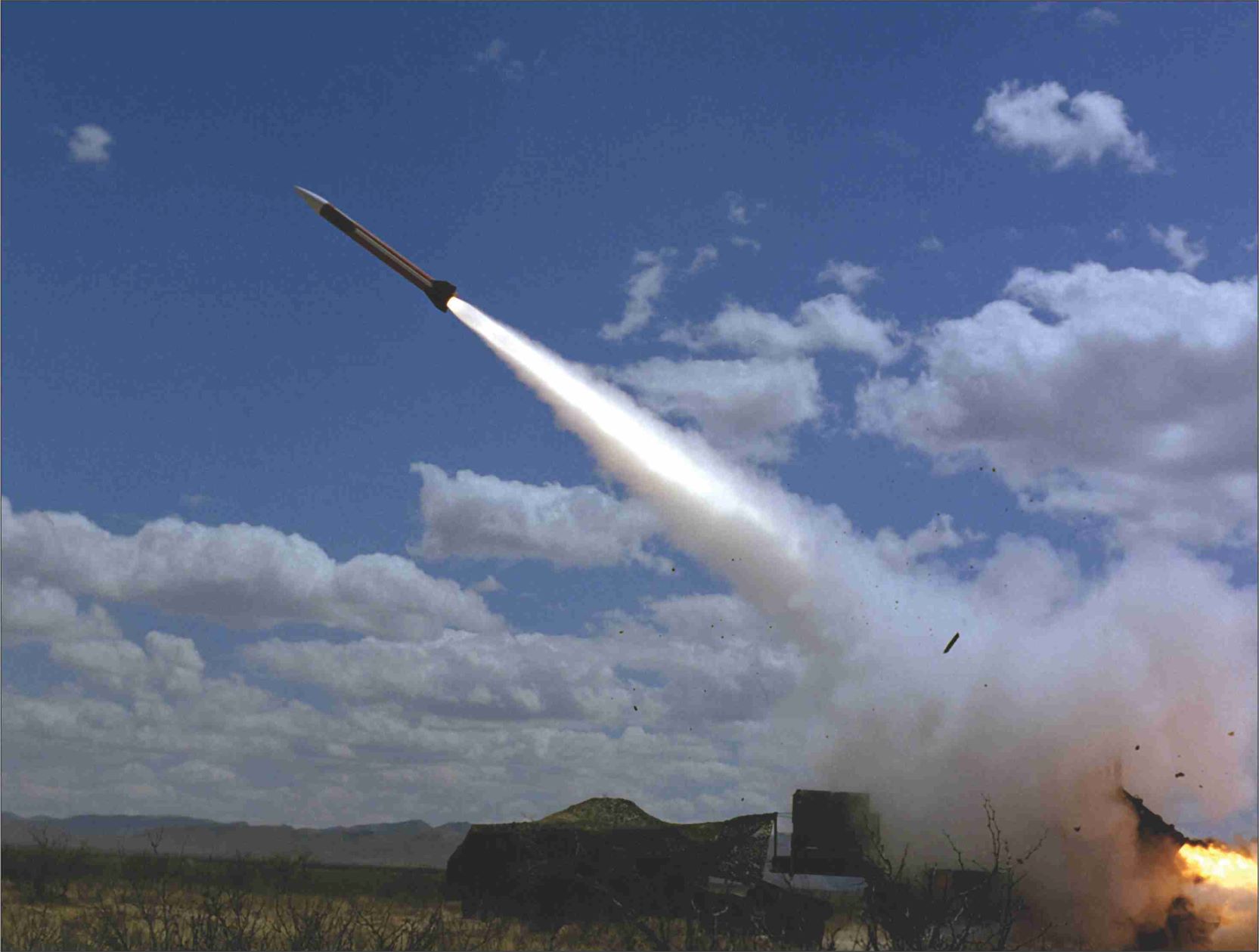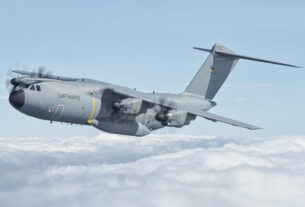Destruction of air defence and carrying out SEAD missions
A credible early military success will depend largely as how effectively enemy integrated air defence systems can be neutralized and fighter jets carry out suppression of enemy air defence mission for containing any repulsive attack.
Air defence missiles have gone through a lot of changes in the 21st century. Right from kinetic speed to long range attack capability, surface to air missiles are the key components of protecting vital national assets, population centers and military installations.
Indeed, the airframe and controls of a missile impose structural and aerodynamic performance limitations.
Ideally, a missile airframe will employ a combination of wing and body lift to provide maximum turn rate with minimum energy bleed throughout all phases of its flight while maximizing range.
Most missile airframes use, much like fixed wing aircraft, indirect control forces to turn, rotating control surfaces change the attitude of the vehicle relative to the airflow which generates wing and body lift forces.
These turn the missile and are proportional to speed. Even at the missile’s cruise speed basic manoeuvrability limits will exist due to the airframe’s G-limit and AoA limits of its surfaces and these may be exploited in defeating it.
A special class of missile is that which employ thrust vector control and radial manoeuvring thrusters. These offer tight manoeuvring at low speeds but are unable to manoeuvre after the burnout of the sustainer or thrusters respectively.
The guidance implements the fundamental control laws designed for the vehicle, it translates the perceived motion of the target into control commands which alter the airframe’s flight path to achieve a hit.
Guidance depends very much upon the class of weapon, the major categories being Command Link, Beam Riding and Homing.
Command Link is common in medium and large SAM types, particularly for midcourse guidance although often it has been used all the way when jamming has degraded terminal homing.
Essentially, it involves the beaming of steering commands from the launch site/platform which is equipped with radar and/or optical tracking systems.
New SAM development
A variation on this technique is Command-to-Line-of-Sight (CLOS) often used with point defence SAMs such as Seawolf, Javelin and Rapier.
A technique with similar qualities is Beam Riding where a missile maintains itself within a microwave or laser beam which tracks the intended target until impact.
The missile employs tail sensors to sense changes in beam direction. Typical beam riders are the RBS-70 and Blowpipe Man Portable SAMs (MANPADS).
Although beam riders may react more quickly than command link weapons both demand exceptionally high sustained turn rates of the missile airframe to successfully track manoeuvring or crossing targets. Both techniques tend to result in cheaper rounds and complex launchers.
A more effective but also more expensive technique is homing which falls into the categories of passive, semi-active and active.
Passive homing missiles track the emissions of the target (typically heat seekers or anti-radiation missiles), semi-active systems guide onto energy reflected off the target and provided by an illuminator on the launch platform.
Finally, active homing weapons illuminate and track their targets. The effectiveness of homing weapons is greatly dependent on seeker, airframe and power plant performance. The subject of technological strategies and countering technological adaptations for penetrating IADS has been recently highlighted.
Until the advent of the F-117A during the mid 1980s, tasked in a large part with crippling key command posts in an opposing IADS, Western defence penetration and IADS suppression strategies were essentially a sophisticated but linear evolution of techniques first pioneered during the 1940s Combined Bomber Offensive over Germany.
During that period the RAF and USAAF first employed standoff jamming and escort jamming aircraft, but also employed low altitude penetration below radar coverage on numerous critical bombing raids.
The British pioneered the model of Suppression/Destruction of Enemy Air Defences (SEAD/DEAD) flying rocket and gun armed Typhoon fighters against Luftwaffe search and acquisition radars.
It is also significant that the Germans pioneered the Surface to Air Missile (SAM) with their Wasserfall ands Rheintochter designs, neither of which achieved operational status, but both of which provided the technological jumpstart for US, British and Soviet developments post-war.
The protracted Vietnam conflict provided the next important stage in this evolution, as the Soviets deployed the S-75/SA-2 Guideline SAM en masse to defend North Vietnam, and the US developed and deployed specialised EB-66, EA-6A/B and EKA-3B tactical jamming and anti-radiation missile firing EF-100F, A-6B, F-105G and EF-4C SEAD aircraft to cripple this IADS.
In parallel the US deployed the F-111A which used automatic terrain following to evade SAM acquisition and engagement radars. While opinions and assessments often differ widely on the success of the US SEAD/DEAD campaign in Vietnam, what is abundantly clear is that the combination of jamming and lethal attacks against missile batteries and supporting radars worked, to the extent that sustainable loss rates in penetrating bombers were achieved.
In this respect the combination of jamming and lethal attacks must be considered to be the winner, as the IADS strategic aim of achieving unsustainable bomber loss rates was simply not achieved. Against the tens of thousands of sorties flown, the success rate of the SAMs was not good enough to deter penetration.
The 1973 Yom Kippur conflict presented a mixed outcome. Initially the highly mobile Soviet supplied 2K12 ZRK Kub/SA-6 Gainful and static S-125 Neva/SA-3 Goa inflicted significant loss rates on Israeli fighter aircraft, but innovative low level flying tactics and use of land manoeuvre forces swung the final outcome in favour of the Israelis.
The US further refined its technological capabilities during the late 1970s, developing the very capable F-4G Wild Weasel IV and EF-111A Raven, both of which set long term benchmarks for these respective capabilities. The rather simple AGM-45 Shrike anti-radiation missile was replaced by the sophisticated digital AGM-88 HARM.
The Soviet reaction to the IADS debacle in Vietnam, and the not entirely convincing performance during the Yom Kippur conflict, and the subsequent Syrian debacle in 1982, was to develop a new generation of SAMs and radars, with more range, better jam resistance, and importantly much better mobility.
These weapons were the S-300P/SA-10A Grumble semi-mobile strategic air defence missile, with its semi-mobile 5N63 Flap Lid engagement radar, modelled on the US MPQ-53 Patriot radar, and the sibling Soviet Army high mobility weapon, the S-300V/SA-12A/B Giant/Gladiator.
By the early 1980s Soviet Voyska PVO units were receiving the self propelled S-300PS/SA-10B, soon followed by the digital S-300PM / SA-10C, a true analogue to the MIM-104 Patriot, but with better battery mobility.
Concurrently, the medium range Army 2K12/SA-6 was being replaced with the more capable 9M38/SA-11 Gadfly.
The distinguishing features of this late Cold War generation of IADS systems were in very high mobility, all three of these systems being capable of firing five minutes after coming to a halt, and being capable of departing a location within 5 minutes of completing a missile engagement.
The S-300PS/PM and S-300V both employed high power, and for that period, exceptionally long ranging phased array engagement radars, much more difficult to jam than the engagement radars in the SA-2, SA-3 and SA-6 deployed and used during the 1960s and 1970s, and much more difficult to target with anti-radiation missiles.
Importantly, the SA-10, SA-11 and SA-12 employed radio frequency datalinks, which allowed the battery command posts, engagement radars and missile launch vehicles considerable flexibility in how the battery was deployed geographically.
When Saddam invaded Kuwait, the US possessed a robust conventional SEAD/DEAD capability in its fleets of HARM firing F-4G Wild Weasel and F/A-18 Hornet fighters, and a robust tactical jamming capability in the mixed fleet of EF-111A Ravens and EA-6B Prowlers. Less visible was the 37th Tactical Fighter Wing equipped with 60 F-117A Nighthawk stealth fighters.
Deploying IADS
The overwhelming and indeed crushing defeat of Saddam’s Soviet and French supplied IADS in 1991 was the result of a concentrated, coordinated and sustained effort using aerial decoys, SEAD/DEAD assets, jammers against IADS radars, and the F-117A against key hardened command posts. There are several key observations, which must be made about this campaign.
The first is that it was representative of the NATO vs. Warpac scenarios of that period-while the Soviets had good numbers of SA-10, SA-11 and some SA-12 deployed, these were mostly committed to protecting strategic targets inside Soviet territory, leaving much of the IADS capability in Central Europe to Warsaw Pact allies equipped with a mix of SA-2, SA-3, SA-4, SA-5 and SA-6 batteries.
While these systems were better maintained, often of better subtypes, and more competently operated than Iraqi systems, they also had to cope with the full capabilities of NATO and the US, not just the forces deployed during Desert Shield.
The second observation is a corollary of the first, in that the new highly mobile SA-10, SA-11 and SA-12 were not deployed in Iraq. Indeed, Iraqi deployment doctrine of that period paid little attention to mobility, with SAM batteries nearly always fixed in location.
To achieve the intended effect against this legacy IADS, the US expended hundreds of drones, and importantly, around 2,000 AGM-88 HARM anti-radiation missiles, to which must be added the complete but smaller warstock of British ALARM anti-radiation missiles.
The Desert Storm campaign remains a key historical benchmark, but unfortunately it has also created quite unrealistic expectations of what can be achieved over the longer term.
The next significant air campaign was the 1999 Operation Allied Force effort against Serbia. While it has been considered a success due to the low aggregate loss rates of Coalition aircraft, the success of the SEAD/DEAD effort was much less convincing.
While the Coalition did successfully destroy most of the static SA-2 and SA-3 batteries, they only managed to destroy 3 out of 25 mobile SA-6 batteries, or 12 per cent of that total, despite the large number of HARMs launched.
Disciplined “shoot and scoot” tactics by the Serbian defenders, intended to keep missile batteries alive, resulted in a persistent threat of sniping attacks which kept much of the NATO force of F-16CJs, EA-6Bs and Tornado ECRs occupied chasing SAM systems, largely to no avail.
The Serbians did execute one particularly successful ambush, killing an F-117A stealth fighter using a legacy SA-3 missile battery.
The Allied force campaign happened a decade ago, since then there have been no significant air campaigns in which an IADS was employed to deny access to attacking aircraft.
What the Desert Storm and Allied Force campaigns did achieve was to provide both a focus and an imperative for further evolutionary growth in IADS capabilities, doctrine and technological strategy.
All Russian SAM systems designed over the last decade can “shoot and scoot” in 5 minutes, with all key components self propelled, now mostly on all terrain wheeled vehicles with high road mobility.
The most recently developed SAM system acquisition radars can redeploy inside 15 minutes. Chinese developed radars and SAM systems are following a similar pattern, with an increasing change to self-propelled designs.
A concurrent trend has been to market self-propelled mobility upgrades for legacy SA-2 and SA-3 systems, leaving only the legacy SA-5 as an inherently static system.
Most recent Russian engagement and acquisition radars are automatic pseudorandom frequency hoppers, many in fact “fast” frequency hoppers with pulse-to-pulse hopping capability.
A similar trend is now being observed in Chinese radar designs. Such radars will exhibit similar jam resistance to Western frequency hopping technology used in radar and digital networks.
Importantly, frequency hopping technology is now appearing in upgrade packages for legacy radars, with at least one SNR-125 Low Blow upgrade including this capability.
Antenna technology
An increasing proportion of Russian engagement and now also acquisition radars are phased arrays, with at least two designs being active arrays with solid state transmitter modules (AESA).
These provide agile beam steering, adaptive jammer nulling, adaptive allocation of transmit power, in addition to very low sidelobe emissions to frustrate emitter locating systems and anti-radiation missile seekers. All of the three recent Chinese engagement radars disclosed are phased arrays.
An important advantage in all phased arrays is they permit angle jam resistant high precision angle tracking by fast sequential lobbing, emulating monopulse techniques.
They also permit high update rate angle and range tracking of multiple targets. This not only increases the potency of SAM engagement radars, but also blurs traditional distinctions between engagement radars and acquisition radars.
If an outbound SAM is receiving midcourse trajectory updates produced by a VHF-band phased array “acquisition” radar networked with the SAM’s X-band “engagement” radar, both might as well be considered to be battery “engagement” radars.
The inevitable long-term trend is that Russian designers will move to active arrays (AESA) once manufacturing obstacles are overcome, resulting in further improved peak power performance.
The trend in Russian missiles has been unequivocally toward increasing range, and concurrent increases in radar power-aperture product as a result.
The improvements in missile range are partly due to more energetic solid propellants, but also due to “smart” trajectory control laws in the digital guidance systems employed.
The longest ranging Russian SAMs, the 48N6E2/E3 and 40N6E, all fly ballistic trajectories against distant targets, achieving respectively ranges of 250 km and 400 km.
The increases in radar peak power required to support the increases in kinematic range provide useful counter-stealth capabilities, effectively neutralising stealth designs in the -20 dBSM performance class.
The late Cold War preference for compact antennas and S-band operation has been supplanted by a preference for designs operating in the L-band and VHF-band.
Of the six recent Russian acquisition radar designs, only one may operate in the S-band, the remainder being beyond any question L-band or VHF-band designs.
The preference for lower bands is intended to defeat stealth shaping and coatings optimised for S-band and X-band threats, but also electronic warfare self protection systems most of which cannot jam below the S-band due to antenna size limitations.
The globalised market for computing hardware and open source software has seen all recent Russian radar and missile system designs built around COTS computing hardware and more that often open source software, especially the Linux operating system, and C/C++ programming language.
This trend encompasses signal processing, track data processing, display graphical interface processing, networking, and command post processing.
The availability of advanced yet commodity high performance computer hardware suitable for embedded applications has removed one of the single greatest technological advantages held by the Western world over the Soviets throughout the Cold War period.
The availability of COTS digital hardware and open source software has been a fundamental enabler for the introduction of a range of advanced processing algorithms and techniques until recently exclusive to Western radar designs.
Radio frequency emitting decoys intended to seduce anti-radiation missiles are now being offered for most Russian radars, many of which include integration features to synchronise radar emissions with multiple decoys.
Inflatable visual decoys are on offer for some Russian equipment items, including the S-300PMU/S-400 series TELs.
At least one Russian radar is being offered with a comprehensive countermeasures suite, including a smoke generator to defeat laser and television guided smart weapons, a flare dispenser to defeat infrared and imaging infrared guided smart weapons, and a chaff dispenser intended to defeat millimetre wave (MMWI) band radar seeker guided weapons.
Russian GPS jamming equipment has been available for at least a decade in the global market.
Active interception
A trend which emerged during the nineties and has been reinforced by recent design optimisations in the Tor M2E/SA-15 and Pantsir S/SA-22 SAM systems, is the use of these short range point defence missile or missile/gun systems to shoot down smart munitions targeting SAM battery acquisition and engagement radars.
The cited intent is to kill anti-radiation missiles, cruise missiles, or any other guided munitions being used by SEAD/DEAD aircraft against the missile battery.
This is more than marketing, in that both the SA-15 and SA-22 have been re-equipped with agile beam phased array engagement radars designed to concurrently track many targets and engage same with missiles.
Cold War era Soviet medium and long range SAMs employed primarily command link guidance and semi-active radar homing guidance, later supplemented by Track Via Missile guidance similar to that in the US MIM-104 Patriot.
SAM designers did not espouse the philosophy of AAM designers, who would equip like missile airframes with alternative radar, infrared, and most recently, X-band anti-radiation homing seekers.
Since the end of the Cold War one has seen Serbia and Iraq experiment with the retrofit of infrared homing seekers to legacy Soviet SAM types.
Agat in Russia have developed derivatives of their active radar AAM seekers for use in the SA-6/8/11/17 SAM rounds. China developed an anti-radiation seeker for use in their FT-2000 SAM, claimed to be a variant of the HQ-9.
The expectation that SAM rounds will be equipped only with a single seeker type belies the pressures to provide diversity in seeker types to overcome defensive jamming.
The Soviets were heavy users of digital datalinks and this propensity has expanded in more recent designs for SAM systems and supporting IADS elements, as commodified Gallium Arsenide chips have reduced the cost of development and production, and widely available software design tools have accelerated the development tempo.
Many contemporary equipment designs are designed around networks to provide wireless connectivity between self propelled components, and COTS networking to provide connectivity inside equipment.
Unlike the Western preoccupation with providing generalised “Metcalf-like” connectivity, Russian designers have been more disciplined and tend to use wireless connectivity for more specific functions.
Low Probability of Intercept (LPI) techniques involve the use of exceptional frequency agility, noise-like waveforms, and controlled emission patterns, to make the interception of radar or datalink transmissions exceptionally difficult.
To date there have been no significant open source disclosures on the use of these techniques in Russian datalinks or radars.
However, most if not all of the prerequisite technologies needed to implement LPI have been mastered by Russian industry. The assumption that LPI will not be introduced and employed in IADS components is simply not supportable even in the near term.
Hybridisation of SAM systems, where legacy missiles and launchers are supported by newer technology engagement radars, has a well established history in the Soviet IADS environment, but mostly in the provision of “backward compatibility” in evolving families of weapons.
The two best examples are the SA-6 and SA-11 family of weapons, where transitional subtypes could control Fire Dome engagement radars on TELARs, and the SA-10/20 family of weapons, where later 30N6 Tomb Stone radars can guide SA-10 5V55 series missile rounds.
A more recent trend has been the hybridisation of dissimilar systems, where a modern agile beam phased array engagement radar gains the capability to guide legacy missiles associated with an entirely different SAM system design.
The best example is the SA-20/21 family of systems acquiring the ability to control the SA-5 Square Pair illuminator radar, and emerging evidence of likely Chinese integration of the legacy SA-2/HQ-2 missiles with the new H-200 phased array engagement radar developed for the new HQ-12/KS-1A SAM.
Hybridisation is especially concerning for two reasons. The first is that it completely obsoletes all extant electronic warfare techniques and equipment developed against the legacy radar.
The second is that a new phased array radar will expand the lethality of the system providing many capabilities absent in the legacy radar.
With the exception of a handful of technologies, such as advanced low observables, high density chip design, and X-band active phased array (AESA) modules, Russian industry has closed the gap in most key areas of IADS related technology.
The defeat of Anti-Radiation Missiles (ARM) has absorbed considerable intellectual effort in Russia, which is now yielding dividends.
An ARM will have to overcome synchronised, smart emitting decoys, which are likely to employ extant Russian DRFM (Digital RF Memory) technology and thus be extremely difficult to distinguish from the target emitter.
In addition, emitters will generate low side and backlobes and may exploit agile electronic beam steering to evade interception. The pervasive use of self-propelled radars will exacerbate the problems observed in the OAF campaign of 1999.
If the ARM can overcome these impediments, it has to survive interception by short range weapons tasked with interception of the ARM.
Unless the ARM is hypersonic, or exceptionally stealthy, or both, it is likely to fall victim to the terminal defences deployed in the IADS.
While recent developments such as ramjet propulsion to improve kinematics, and multimode seekers to attack non-emitting targets, will improve anti-radiation missile effectiveness against high mobility threats, they cannot address the active use of countermeasures against the missile seeker, and the use of defensive fire against the missile itself.
Ideally, the pilot of a penetrating aircraft should try to discourage a missile launch, if this is unsuccessful, he must then exploit every known weakness of the missile’s system to defeat it. Unlike AAA, missiles are visible threats which act on a timescale which does allow some response.
When dealing with SAM sites, launches are most easily prevented by remaining outside of the known envelope of the SAM, moving fast and low and exploiting terrain to frustrate tracking.
Jamming can be useful but is often futile at very close range, especially against massed SAM systems.
Denying a missile launching aircraft an opportunity to shoot is more demanding and generally constitutes the defensive aspect of aerial combat, a major subject in itself.
To a large degree, it will depend upon the known performance limitations of the threat aircraft, its fire control system, its missiles and the competence of its pilot.




